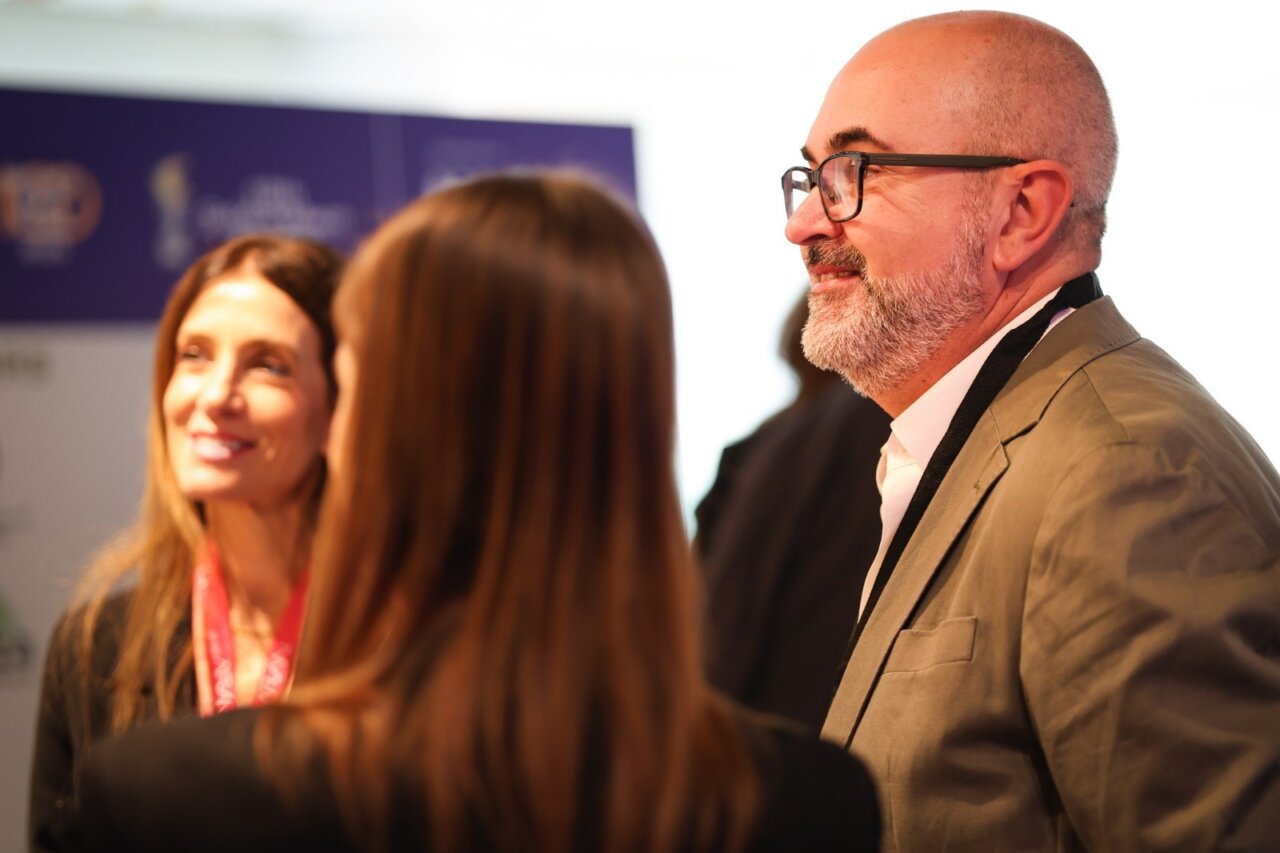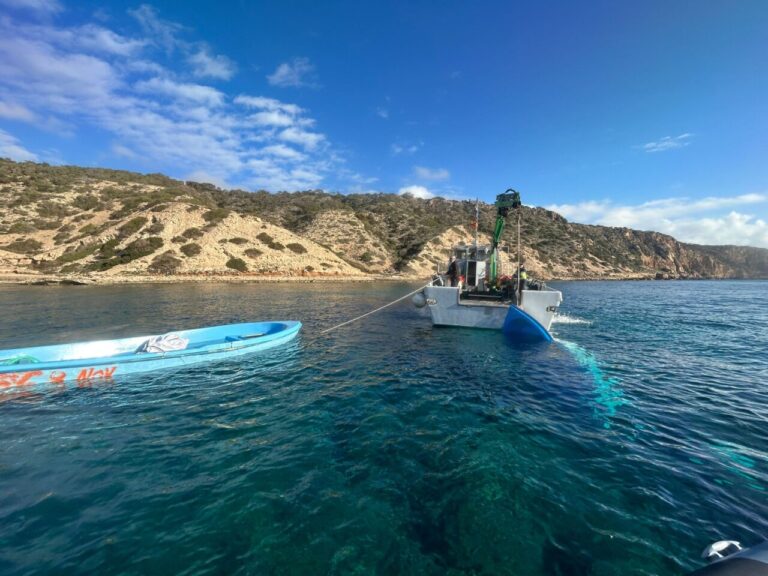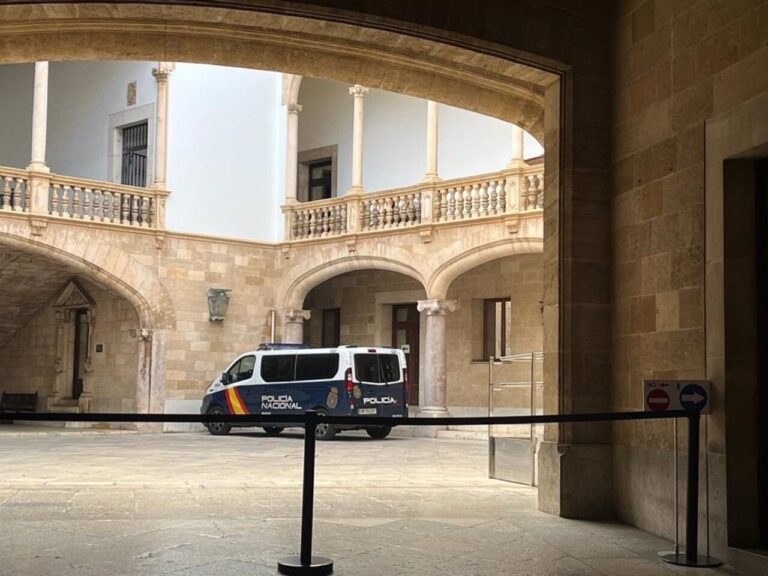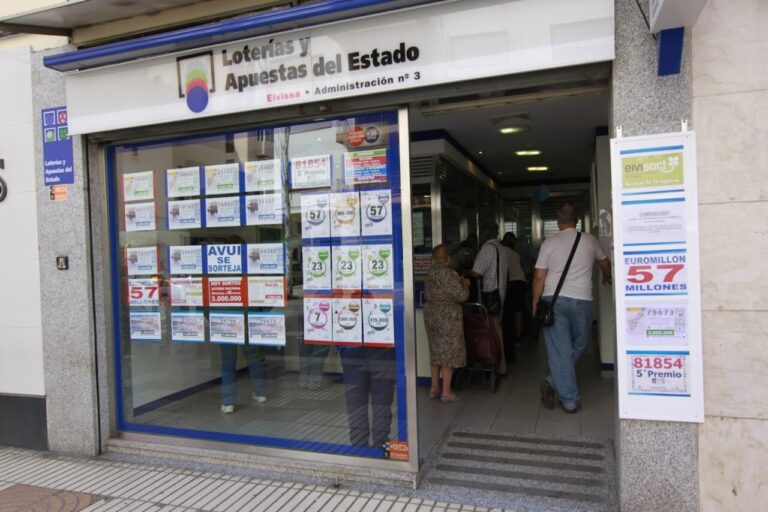Between the reddish hills of the interior of Ibiza, Joan Ribas Ferrer or Joan d’en Micolau from Sant de Rafel de Forca (Eivissa, 1980), builds walls that are not only structures, but declarations of love for the landscape. Each stone placed is a gesture of resistance against oblivion, a way to restore functionality to what once sustained rural life on the island. In his eyes, restoring a wall is not a job: it is a way of rebuilding life itself and paying tribute to his ancestors who made the countryside their world.
-What is the history of the Ibizan walls?
-The technique is the important thing, which is all over the world. The story on the island is that in the late 1700s when Bishop
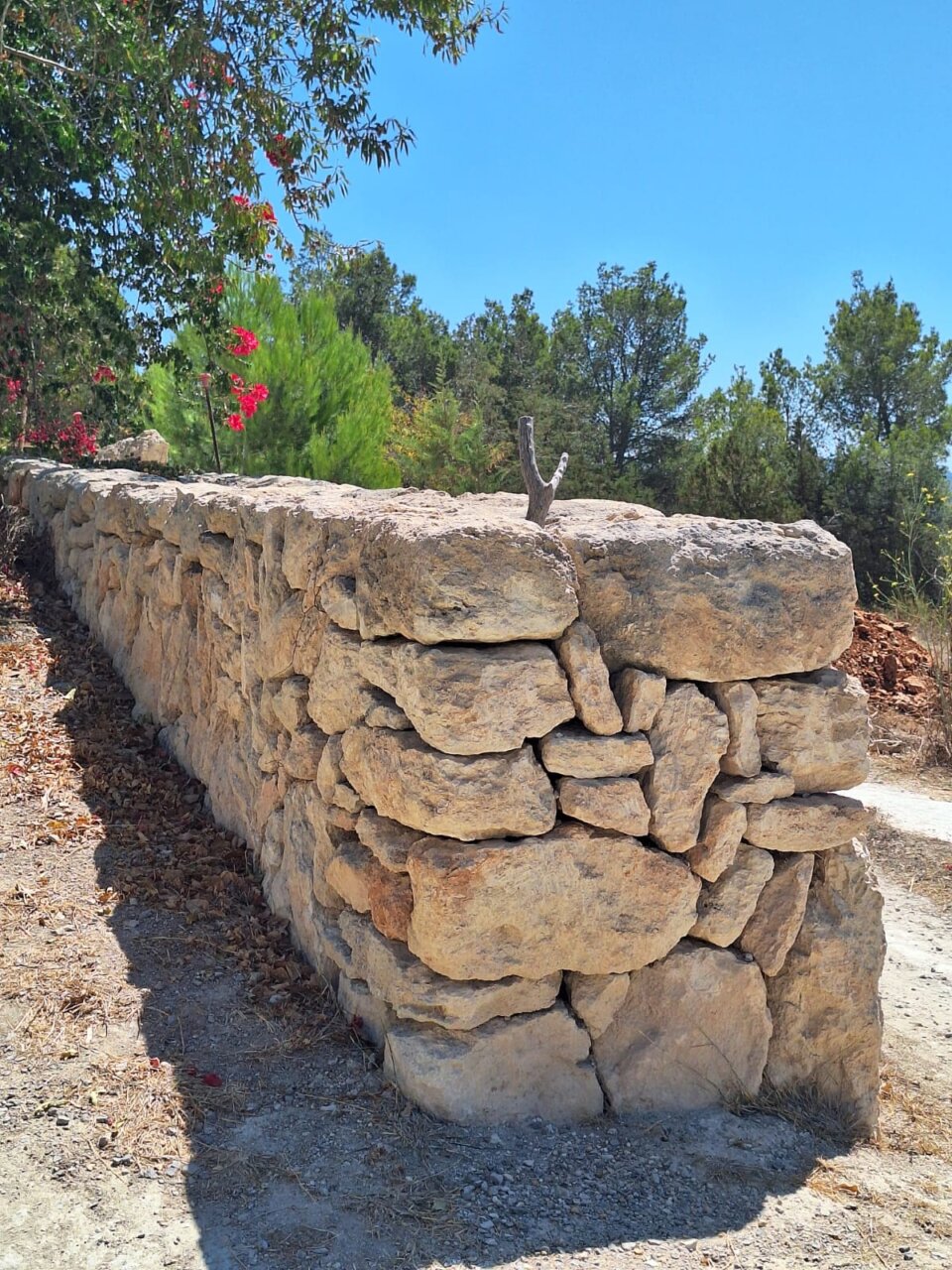
-Why are they called Dry Walls?
-Because you don’t use water, and inside there is nothing like mortar or cement, it is stone with stone. And when you have experience, you see a stone and you know if it is for exterior or interior use, or if it’s a stone that can be used in the interior or exterior. reble, small stone that goes inside. Then there are the wedges or through to wedge underneath to settle it so that it does not move. It is necessary to avoid having large holes but at the same time that the water filters through.
-But what is it that supports the wall structurally speaking?
-They are called cap llinyats translated would be aligned (linen) heads. They are columns of large flat stones or with a good base above and below placed one on top of the other.
It is so called because in those columns that you were raising in advance every 5 or 8 or 10 meters of distance between them but at the same time as the rest of the wall, the thread was placed stretched to pull a straight line. That thread was made of linen ( lli in Catalan). And they fulfill several functions:
To give stability to the wall as a whole. In case of breakage of part of the wall due to flooding, etc., it would not have a domino effect, but it would stop dry until the next one. cap llinyatIt is built independently (without being interlocked with the rest of the stones). If it is well built, it should stand completely alone.
It also divides sections where there is a bend (angle) by change of direction. In this case, there will be two chaos llinyats together but independent of each other, each marking its own direction.
Also to finish a wall, in all its verticality, it will be with a cap llinyat.
-From ignorance one would think of the importance of using heavier stones underneath to make a solid base, but I see big stones on top, why?
-Because where there are sheep, for example, and they jump over the wall with their legs, they can dismantle it in one blow, and also give weight and support to the wall as a whole.
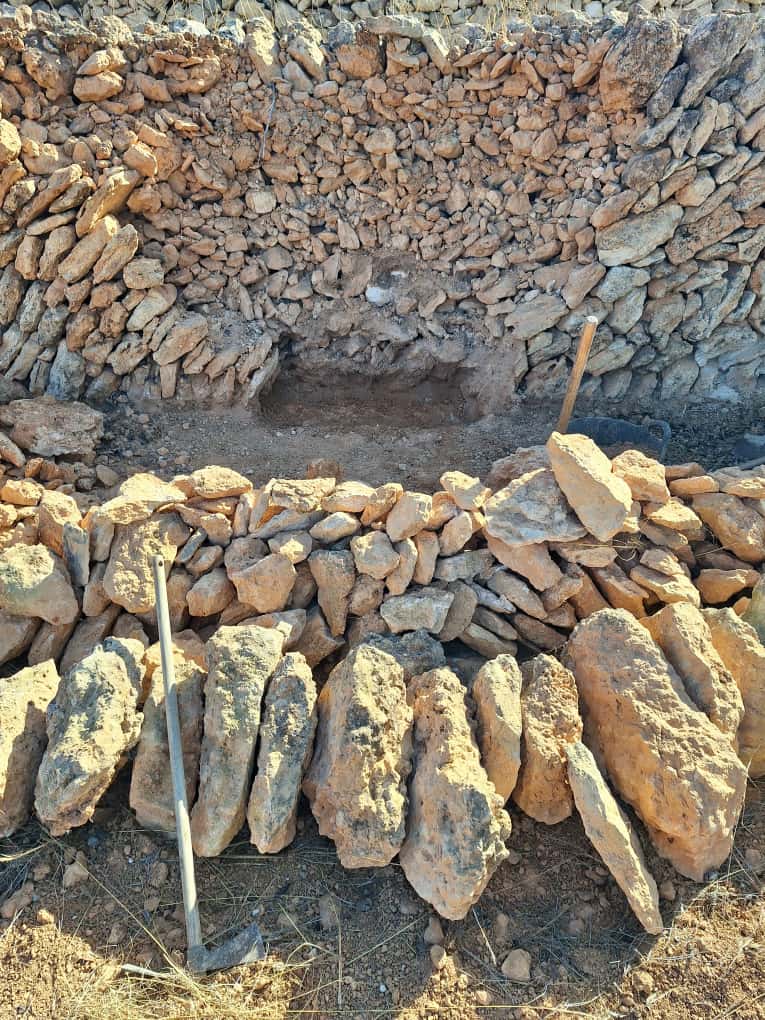
-You will be amused by my classification of the types but I see that there are like different models of walls, there are the “tetris” or those made up of stones of different shapes arranged harmoniously and then the “slices” model [laughter, impossible to avoid] which are flat stones one on top of the other, now tell us what types there are and why?
-Each to his own. My technique is flat stones placed diagonally, in wedge. Because it is not only eye-catching, but also if there is movement of the wall what it will do is to consolidate more. This would be the more traditional type. The tetris as you call it, depends on what you have in your property. Also keep in mind that we have live stone and dead stone. At home I have dead stone, which is more earthy, which is easier to dismantle, and then live stone, which you can shape with two blows. The dead one is whiter in color and the live one is red or blue-gray.

-Why are they declared as Intangible Cultural Heritage of Humanity, by Unesco, in November 2018?
-Because of the technique, the dedication, the kilometers built and the landscape. But it’s the technique, that’s why it’s immaterial, I guess.
-I know that the thickness of the walls of a farmhouse must be 70 cm, do the walls have a standard thickness too?
-No concrete measure, it also depends on how much stone you have on your land. The houses were also built based on how much sagebrush you had on your land, if you had sagebrush to cut, they built a new room. The usual way of doing it is based on what you have or what you can barter with your neighbor.
-What do you think about buying stone from outside to make a wall?
-I don’t like it. It’s artificial. It is not sustainable.
-What is the purpose of the walls?
-There are walls that are made to support terraces, and there are also tanks that serve as an enclosure for animals, like a corral, or to delimit farms.
-Does interest in this run in your family?
Yes, as a child I lived a lot with my grandparents, and my great-grandfather who died when I was young, I always have him very present. And I’ve always been very fond of touching stones and trees, my passion. When I was a child my grandfather Pep would call me and tell me “come on, we have to pick up rocks with the tractor and trailer” and that was what I liked most in life. No beach, no partying, for me working in the fields was the most fun. It filled me up a lot. Then as a teenager I felt a little more obligated, and if I went out with my friends I felt guilty about leaving the fields untended.
-Did you play a lot when you were a kid with Lego or wooden bricks that you could build with, maybe that’s where it comes from too? [laughter].
-I didn’t have it but there was a cousin who did, he played a little but not much, but it was mostly the moments and memories created in the field from the stone. I would love that if I had grandchildren someday they would look at my walls and say “those were made by my grandfather”.
Wait, because as a result of your question I remember now that when I was between 8 and 12 years old I suffered from nightmares and I was sleepwalking. I would go down to the living room or the bathroom to create geometric shapes with chairs and tables, whatever I could find. In my head, I needed to build by stacking objects. And if I didn’t succeed, I felt a monumental frustration and anger. Maybe that could be part of the origin of my desire to build things by stacking [smiles].
-You need to leave behind a legacy, I see?
-Yes, I believe we have a function or duty in this life, mine is to conserve and give value to the field and with that honor our grandparents and what has been done. My great-grandfather used to take a chair nap for a few minutes so he could continue working, even on full moon nights he worked at night restoring walls. And he was not a builder, but my father told me that he went at a speed and with an ease and knowledge of the subject really impressive. They were men of a different kind.
Your great-grandfather was a very important figure for you, wasn’t he?
-Completely. From my great-grandfather Joan Micolau I inherited the technique of how to place the stones to build dry wall, although he passed away when I was only 2 years old. His style, and now mine, was to lay them. de cantu, sempre cap es mateix jeient, which means: tilted, always in the same direction. The important thing is to break horizontal and vertical lines, ending up with a puzzle aspect…being flat stones placed in this way, it is achieved that with their own weight they are wedged with each other with the passage of time.

-What do you think about modern houses with Ibizan walls?
-They have to be very Ibicencan for me to like them. When I hear “with an Ibizan touch” and I see that they even have concrete, I say no, Ibizan is rustic. Maybe everything is too perfect, it tastes like a mask, a fake, an imposture. I must say that there are companies like Blakstad that do make nice and more realistic things.
-What is the situation of the Ibizan countryside right now?
-It is recovering a lot because there is a lot of local and European aid for, for example, forest care. There are also more companies dedicated to deforestation, to tilling, to pruning, to recovering crops as well, and the truth is that I am seeing in the last 10 years how fields are becoming productive again, which gives immense joy. Work is not returning to the fields, but land is being recovered for the forest.
-I was always struck by how this land of ours is very rough, fat, coarse, hard, and yet it is very fertile, is it that it has been little used over the centuries or why does this happen?
-Yes, our soil is heavy, fat, and the reason for what you say is because it was not punished over time. And also little has been used. Yes, in the last 50 years chemical pesticides have been used, but not before, and now it is more regulated, so yes, we have very good soil in very good condition. In addition, the climate we have means that we have a lot of vegetation, a lot of undergrowth and grasses that are transformed into organic input for the soil.
-Is there any fruit that you say “how come we’re not planting a lot of this”?
–[think] There should be more carob trees, which is what is holding up well. If I have to plant something new I go with carob, it works the land itself, bears a lot of fruit and is easy to take care of. It gives shade all year round and is very grateful. Besides the scent, right now in autumn, I love it.
-What is the truth in what they say that the earth must be stirred up, that it is good for it, they say.
-The rotovato is the worst invention of all. What it does is to break everything, it kills all living things, it exposes the soil that was in the shade to the sun and it is bad, and it also makes a subway slab about 20 to 25 cms from the surface and from there the water does not filter any more. Turning the soil yes, superficially. The fundamental principle is that if you are not going to plant anything, do not touch it.
-How do you manage irrigation?
-What I do is plow furrows, every 25-30 cms and if you move them every year the water filters well and you have removed the soil in a correct way.
-And in the summer when it doesn’t rain?
-No irrigation. Or very little, not at all. For example now I planted Mulberry trees that will give me shade 8 months a year from the age of 3 years and do not need much water. Also once they get established they are on their own. My sheep love their leaves so they give me food for my animals too.
-And the olive trees, because those are an institution.
-Yes, they are. They have been here for centuries. There is a lot of new replanting but what happens is that it is irrigated. There is a lot of pest and insecticide… it is not rustic. The old olive tree has been grafted in a wild way, so if it was born there, it is because it wanted to be born there, that is why they are more resistant and adapted perfectly.
-What is the top 3 most autochthonous Ibizan trees?
-For me the fig tree, that already in the first century the Romans spoke of the fig trees of Ibiza and its figs that they exported dried in the form of xereques the olive tree, and the carob tree.
-What about the almond tree?
-The almond tree is in the doldrums because of the xylella fastidiosa that came from Italy and was planted in the Balearic Islands, killing all the old almond trees. But those old trees no longer bore fruit and this forced us to renew, which is good, now we will have almond trees that will bear fruit for 20 years. Change of cycle.
-Is there land in Formentera, I mean, is there, but is there enough land and resources to exploit it?
-Yes, less than here by extension obviously, but what we don’t have is water. If you drill too much you are going to the sea for sure. I am also working there recovering the field, but everything is very complex due to the scarcity of water.
-Do you think desalination plants are the solution?
-Noo, no way. The rest that is left, the salmorra, goes to the sea or to the countryside and that kills everything.
-So what is the solution then?
-Wasteless. And collect rainwater. I have open tanks to collect and use it for irrigation. But if we make soccer fields and golf courses, tropical gardens, etc… it is not going to work. I’ve seen water trucks go every day to luxury homes to water roads so that when cars drive by they don’t kick up dust. It is an insult to life.
-What do you feel when you are working in the field restoring walls?
-It is like meditating for me, at the same time that I am making a living I am recovering something functional, I am giving it life, that’s why my company is called “Micolau de Forca, paisatge viu”.Micolau de Forca, paisatge viu“that is to say that it is alive or that it lives.
-Where does Micolau come from?
-We have researched in the historical archives and it turns out that 300 years ago my house was called “Casa Llarga”.Casa Llarga ” . Then Micolau comes from Nicolau, then came the Franco era and was changed to Miculau, but I removed a u and put an o to sound more Ibizan. Y Forca, because that is where it belongs, that is, in Sant Rafel de Forca.
-So what could you be hired for?
-Rebuilding walls first, for tree pruning in general, and then I am a landscaper but rustic, with what you have here. Also new plantations always with the autochthonous.
-Do you think people will ever understand the full value of what a tree is? As a witness of time, how important it is to be an oxygen generator, etc.?
-This morning I saw the only carob tree we had in San Rafael cut down and I started to cry. No, people don’t understand and I don’t think they will. Trees talk to me, I feel them.
-You have worked in tourism for 15 years, do you miss any of that?
Noo, no way. I was a chauffeur for luxury people, like the creator of Telegram for example, and I looked at the countryside and suffered for not being there working it. In the end, with the help of friends, I became self-employed and I took the plunge and since then I have been happy with my decision because the countryside is my life, and the Ibizan countryside is my place in the world.





